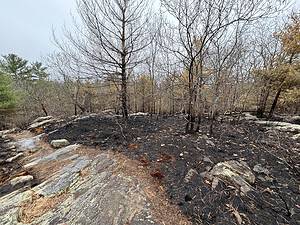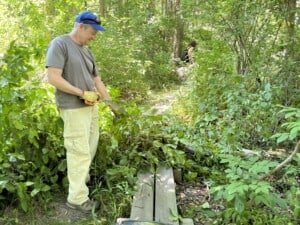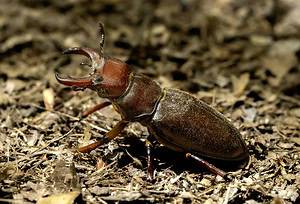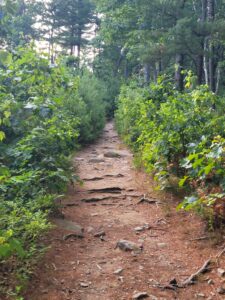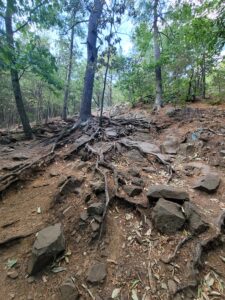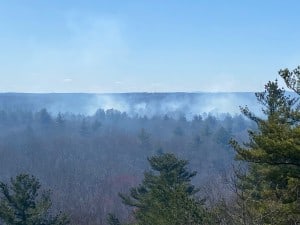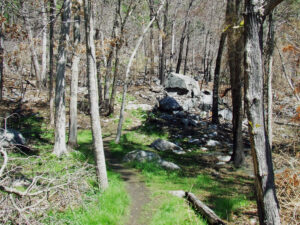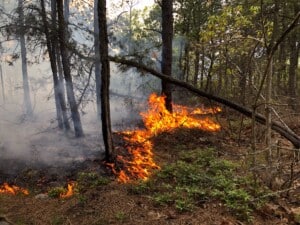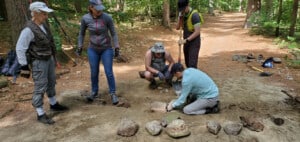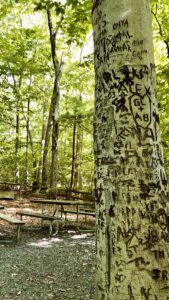Yesterday’s Boston Globe featured an article questioning the ‘war on invasive species.’ Some ecologists, according to the article, challenge the prevailing wisdom to promote native plants and encourage control of invasive species.
I hate to be a spoiler, but the end of the article implies the debate is really a fight about how we talk about native and non-native plants and less about how we manage our forests.
Scientists on both side of the debate agree that many non-native plants not problems and some are beneficial. And everyone also agrees that we need to control the most destructive invasive species, like the Asian Longhorn Beetle. Although the story didn’t mention it, I would bet that they would also agree that we need to control the fast-growing mile a minute vine, which is now covers dozens of acres on Greenlodge Street in Canton.
We are supporting the Department of Conservation and Recreations’ efforts to successfully control the mile-a-minute vine which grows in the part of Blue Hills called Fowl Meadow. So no matter whether you think we should cherish our natives or celebrate our invasives, I hope you’ll join us August 13th to control the most destructive invasive species in the Reservation. Check the calendar for details.
I’ve included some excerpts from the article below. Read the full story on the invasive species dispute.
Above photo by Jean Lewis of Canton.)
According to [Macalester College biologist Mark] Davis and his co-authors, the fight against invaders amounts to an impossible quest to restore the world to some imaginary, pristine state. The world changes, they argue, and in some cases, the arrival of a new plant or animal can actually help, rather than hurt, an ecosystem. The whole idea of dividing the world into native and non-native species is flawed, the article says, because what seems non-native to one generation might be thought of as a local treasure by the next. Instead we should embrace “novel ecosystems” as they form, and assess species based on what they do rather than where they’re from.
it would appear that the two sides are badly mismatched – those who oppose the targeting of non-native species are still very much a minority – their disagreement highlights questions about mankind’s relationship to nature that are far from settled.
“We need to learn to accommodate change, and change our attitude rather than try to garden nature and keep things the way they are,” Davis said recently. Species migrate, he said, and some end up thriving while others go extinct. This would happen whether people were involved or not, and Davis emphasizes there’s no reason to believe that the best version of an environment – whether that’s defined as the most diverse, or the most useful for humans – is the one that happened to exist just before we meddled with it.
When it comes to what we should actually do for the environment, the two sides of this debate might not be quite as far apart as their denunciations of one another might indicate. Just as most ecologists accept that only a fraction of non-native species are harmful, the anti-nativists, when pressed, will admit that unequivocally destructive species like the Asian longhorned beetle should be reined in. Their disagreement lies more in how we should talk about the issue, how we justify our interventions and how we label the species we want to eradicate.
Is the debate simply over rhetoric, then? If it is, its fierceness has highlighted just how important rhetoric is to the environmentalist movement, and how valuable the distinction between native and non-native is in terms of rallying people to the cause of conservation. Psychologically, it’s not hard to see why the anti-nativist position holds an appeal, and why it would worry environmentalists.


